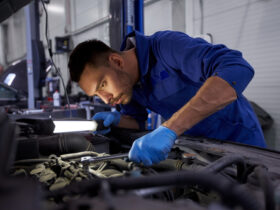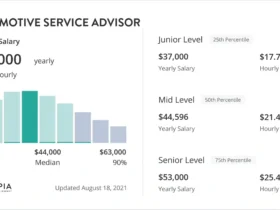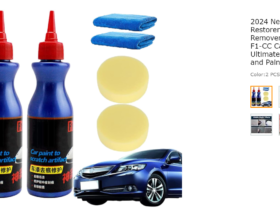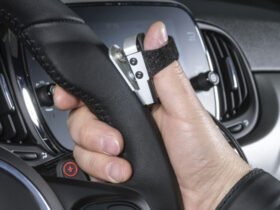WHAT HAZARD CLASS ARE AUTOMOTIVE BATTERIES, These groups are called classes, and they help us understand and manage the risks involved.
what hazard class are automotive batteries, The Department of Transportation (DOT) in the United States has sorted these dangerous things into nine groups.
- Explosives: Things that can explode are in this group. They are split into different types based on their explosive properties.
- Gases: This group has three types: gases that can catch fire, gases that don’t catch fire, and gases that are poisonous.
- Flammable Liquids: Liquids that can easily catch fire belong to this class.
- Flammable Solids: This class includes solids that can catch fire and substances that might catch fire on their own.
- Oxidizers and Organic Peroxides: Oxidizers provide oxygen to fires, and organic peroxides can break down and release heat.
- Toxic and Infectious Substances: This class has two types: toxic substances and substances that can cause infections.
- Radioactive Materials: Materials that emit radiation are in this group.
- Corrosive Substances: Substances that can damage human skin or cause corrosion are part of this class.
- Miscellaneous Dangerous Substances and Articles: Things that can be risky during transportation but don’t fit into the other classes are in this group.
These classes help us follow rules and guidelines to keep everyone safe when handling or moving hazardous materials. The rules for transporting hazardous materials in the United States are outlined in the Hazardous Materials Regulations (HMR).
Car batteries are considered dangerous because they have materials that can be harmful. The materials, like corrosive substances and toxic stuff, make them hazardous.
The acid in car batteries can burn your skin and eyes, and there’s lead inside, which is not good for people and the environment. To keep everyone safe, it’s important to dispose of car batteries correctly. Recycling programs help make sure that the materials in the batteries are handled in a way that won’t hurt the environment or people.
Below, we’ll explain what hazardous materials are and what classes automotive batteries fall under.
What Are Hazardous Materials?
Hazardous items can be harmful to people, animals, or the environment if not handled carefully or exposed improperly.
Table of Contents
DOT classes of hazardous materials
- Explosives
- Gasses
- Flammable liquids and combustible liquids
- Flammable Solid, Spontaneously Combustible, and Dangerous When Wet
- Oxidizer and Organic Peroxide
- Poison (Toxic) and Poison Inhalation Hazard
- Radioactive
- Corrosive
- Miscellaneous dangerous materials
What Type is WHAT HAZARD CLASS ARE AUTOMOTIVE BATTERIES
Many shippers ask the question, automotive batteries are what hazard class? To answer that, it’s important to know what’s inside of an automotive battery.
Most typical automotive batteries are lead-acid batteries. This means the battery contains lead alloy components that are submerged in acid to create electricity.
Automotive Batteries Are Which Hazard Class?
Electric cars use different batteries than regular gas-powered cars, making them distinct in terms of technology and energy storage.
Electric cars use a lithium-ion battery to power the electric motors. These fall under a different class of hazardous materials than their typical lead-acid automotive battery.
The Risks Associated with what WHAT HAZARD CLASS ARE AUTOMOTIVE BATTERIES

Credit : https://phasev.com
Handling automotive batteries involves risks such as chemical burns, environmental damage, and potential combustion. The corrosive nature of the electrolyte and the presence of lead plates require careful handling and adherence to safety protocols to prevent accidents and environmental contamination.
the answer is two different classes. These are class 8 and class 9 depending on the battery type.
Is a Car Battery a Hazardous Material?
Yes. A typical car battery is a lead-acid battery, and the lead and acid are considered hazardous.
Automotive Batteries Are An Example Of Which Hazardous Class?
Because of the acid in a typical automotive battery, it would be an example of a class 8
Class 8 hazardous materials are defined as corrosive materials or substances.
So when shippers ask about the WHAT HAZARD CLASS ARE AUTOMOTIVE BATTERIES, the answer is class 8.
WHAT HAZARD CLASS ARE AUTOMOTIVE BATTERIES also depends on the type of battery. As mentioned earlier, an electric-powered car uses a lithium-ion battery, a different hazard class.
Lithium Batteries Belong To Which Hazard Class?
A lithium battery falls under 9 which is for miscellaneous dangerous substances and articles. Class 9 is used for materials that don’t fall into the other classes for various reasons but can still be very dangerous.
Car batteries with acid and lead are considered hazardous (Class 8), while lithium-ion batteries fall into the miscellaneous category (Class 9) due to their saElementor Recipefety concerns.
Defining hazardous materials is done by the Department of Transportation, which is a federal agency. This means that these are all federal regulations and classifications. The hazmat classes are required to be followed by all transportation countries operating in the United States.
An Example of Hazardous Materials
WHAT HAZARD CLASS ARE AUTOMOTIVE BATTERIES are a quintessential example of hazardous materials that require meticulous handling. Containing substances that can cause damage, such as corrosive acids and heavy metals, these batteries pose significant risks if not managed correctly.
The corrosive nature of the electrolyte within can lead to severe chemical burns or environmental damage through corrosion.
It’s important to know, handle, and store hazardous materials correctly to prevent accidents and ensure safety, not just to follow rules, but to understand the potential harm they can cause and take steps to stay safe.
The Imperative of Proper Disposal
Disposing of hazardous materials, particularly is a critical environmental concern. These batteries contain substances that can cause damage to living tissue and the environment if not disposed of properly. The disposal process must be carried out with utmost care to prevent leakage and contamination, which can lead to soil and water pollution.
Recycling is important because it helps us reuse valuable materials and dispose of waste responsibly, ensuring a cleaner environment for future generations.
Proper Handling and Disposal

Credit : medium.com
Proper handling and disposal of automotive batteries are essential to ensure safety and environmental protection. This includes wearing protective gear like safety goggles, handling batteries away from heat sources, and following local regulations for disposal. Recycling is a preferred method, as it helps in mitigating environmental impact.
The Two Main Battery Types

Credit : www.royaltyspeed.com
Lead-acid batteries and lithium-ion batteries are the two main types used in vehicles.
Lead-acid batteries have sulfuric acid and lead, while lithium-ion batteries can be risky due to their flammable electrolyte.
Automotive Batteries Are An Example Of Which Hazard Class (Walmart)
The type of automotive batteries sold at stores like Walmart or AutoZone are generally the traditional lead-acid batteries.
These batteries come in two types, which are wet-cell and dry-cell and the designation has to do with the type of liquid inside of the battery.
As the name implies, wet-cell batteries have a liquid mixture inside the battery. There is also a cover that can be removed to add new distilled water to the battery if needed.
Dry-cell batteries, or “gel cells” as they are sometimes called, use a gel instead of a liquid. These do not have a port for refilling the battery.
Despite being different types of batteries, these two types of automotive batteries are both class 8 hazardous materials when it comes to shipping or transporting them.
There is another type of battery known as an absorbed glass mat (AGM) battery. These are not common in cars and are instead mostly used in specialty vehicles, such as off-road vehicles.
These AGM batteries would also be class 8 hazardous materials.
Transportation of Hazardous Materials
Transporting hazardous materials of any class requires that certain protocols be followed.
You need to pack items in the right containers and include any safety gear required for shipping.
Hazardous materials also have specific labeling requirements. This means DOT-approved labels (placards) indicating the items’ hazardous material class.
There may also be additional labeling requirements that further indicate the dangers present or what is contained in the shipment. These additional labels can indicate whether something is non-spillable or has any type of other special property that requires special handling.
A materials safety data sheet may also be required with the labeling while transporting. A materials safety data sheet (MSDS) contains additional information and warnings about the hazardous materials contained in the package.
These labels are critical so shippers and carriers know what cargo they are transporting and what precautions to take. Not only that, in the unfortunate event of an accident, first responders and others on the scene can know what hazardous materials are present. This way they can take the necessary steps to avoid adverse health effects or environmental damage from the materials or chemical substance.
Conclusion:
The handling and disposal of automotive batteries, classified under Hazard Class 8 as corrosive materials, require careful attention and adherence to safety protocols. Their composition, containing sulfuric acid and lead, presents significant health risks and poses environmental hazards. Individuals and professionals alike must recognize these risks and engage in responsible practices. This includes proper handling, wearing protective gear, adhering to EPA and DOT regulations, and ensuring safe and environmentally sound disposal, preferably through recycling.
Following safety rules when handling batteries helps protect the environment and keeps us safe.
For those unfamiliar with the proper handling of automotive batteries, seeking professional assistance is advisable.
Professionals learn specific rules to safely handle batteries, and protect people and the environment.
















Leave a Reply